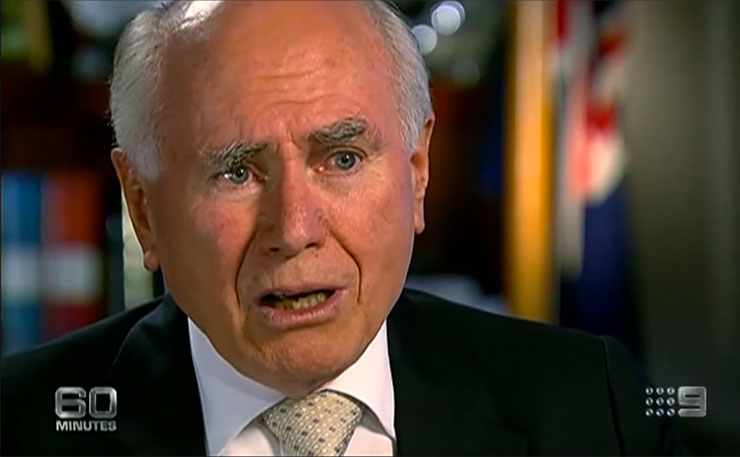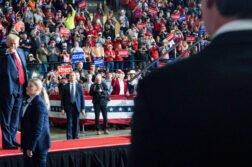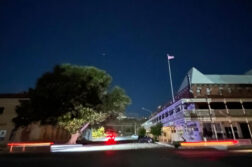In an open letter to readers Amy McQuire, Michael Brull, and Samah Sabawi call for strong ties across communities to counter the rising tide of racism, wherever it comes from.
George Fredrikson was the Edgar E Robinson Professor of History at Stanford University, and his academic specialty was racism. He observed that in late 19th century Germany, an anti-Semitic party emerged in the election of 1881. Its “success was engineered from above”, as the Conservatives were “using hostility to the Jews to lure middle-class voters away from the Liberals.”
In the 1890s, a “more spontaneous and populist antisemitism” emerged. This time, the Conservatives decided to “emulate their tactics. The incorporation of an antisemitic appeal into the Conservative program led to the decline and disappearance of the single-issue anti-Jewish parties by the late 1890s.” Fredrikson concluded that, “Like the Democrats in the southern United States,” Germany’s Conservatives “learned that racism could be used, whenever expedient or necessary, to steal the thunder of their populist rivals and keep themselves in firm control.”
This use of racism – by the respectable, mainstream conservatives – sowed a poisonous legacy for Germany. The future was not set in stone, but a dangerous path was paved for future generations to explore.
When Pauline Hanson was kicked out of the Liberal Party in 1996 for offensive comments about Aboriginal people, she was drawing on a long and sordid history.
In 1997, after her election to the lower house seat of Oxley, One Nation released a book: Pauline Hanson: the Truth. The book railed against the millions of dollars supposedly spent on Aboriginal people. Feeding off the racism which has propped up white prosperity for the past 200 years, it claimed that Aboriginal people were getting special privileges.
The central proposition the book used to bolster this bigoted view was that Aboriginal people were cannibals in the 19th century. “They killed and ate their own women and children and occasionally their men,” it read. “The older women were often killed for eating purposes, like livestock.”
These views may seem like an anomaly – racism on the extreme end of the spectrum, to be confined to the fringes of society. But the fact is that Australia’s racist history, its justification for killing Aboriginal men, women and children, for stealing land, children, wages and remains, were all based on racist tropes like this, which Pauline Hanson shamelessly revived. White Australia, and everyone who comes to this country, benefits in some way from the assault on Aboriginal people and culture that Hanson so crudely justified.
Most of these tropes – including the trope of the Aboriginal mother as an infanticidal cannibal – were based around the demonisation of Aboriginal women. Academic Liz Conor, discussing her recent book Skin Deep, told 98.9 FM that this trope was used to dehumanise Aboriginal people, and paint them as savages, to justify the stealing of land and cement the fiction that is “terra nullius”.
“The idea that primitive people were cannibals was everywhere and it was in settlers’ mouths before they arrived here. In Australia we did this especially nasty thing because I think we were especially nasty to be honest. And especially misogynistic. We said Aboriginal people were not only cannibals, they ate each other and etc, but their mothers ate their babies, they ate their newborns.”
“And in Australia we said that not because they were hungry even, but because the meat was especially tasty to them.”
Dr Conor has traced the journey of this demeaning trope through history, showing how and why it was re-circulated.
“(There was this) repeating motif from settlement right through to Daisy Bates” Dr Conor says, but “the last person to say (an incarnation of this) was Pauline Hanson.”
Racism becomes engrained when these tropes are repeated. Of course, you’d never see a mainstream conservative party repeating outrageous claims like this. And yet, much like the German Conservatives, they adopt their own form of racism, even more insidious because it is painted as sensible, and then sold to the public.

If you compare Hanson’s maiden speech to the Howard years, you see the seeds of Hanson’s racist thinking reflected throughout his policies towards First Nations people.
In her maiden speech to Parliament, Hanson called for the abolition of ATSIC. In 2004, the Howard government put that plan into action. In that maiden speech, Hanson led an outright attack on Aboriginal land rights, and on native title. Howard then began his plans to whittle down native title following the Wik decision in the High Court, spurred on by powerful mining and pastoral interests.
The scare campaigns around Aboriginal land rights and native title from the Hawke era through to Keating and Howard, by mining and industry lobbies helped cement this racism, and paved the way for the acceptance of outrageous views like Hanson’s.
The claims of Hanson – that Aboriginal people get special privileges at the expense of non-Aboriginal people, that there is an “Aboriginal industry” – helped lay the groundwork for the era of “mainstreaming” in Aboriginal affairs, a disastrous policy era which still dominates thinking and policy today.
Ignoring and even trying to explain the racist bigots at the bottom excuses the equally vicious racism at the top – from the likes of both major parties, and sidelines the role of big corporations in promoting racism for their own self-interest.
Likewise with Hanson’s anti-Asian sentiment. It was institutionalised in the White Australia policy as Australia was founded, and continued at the elite level with anti-Asian sentiment in the 1980s, espoused by figures as respectable as the Leader of the Opposition, John Howard. This sentiment was then expressed in cruder form by One Nation. One Nation’s toxic agenda was then absorbed by the Coalition. This included the abolition of ATSIC, and the creation of Temporary Protection Visas for refugees. Just as in Germany 100 years earlier, the mainstream conservatives reclaimed the voters of the smaller racist party.
Equally, anti-Muslim sentiment did not begin with Hanson. A more sophisticated, highbrow anti-Muslim sentiment was used to justify the mandatory indefinite detention of Muslim asylum seekers. It was used to justify the torture of Australian citizens in Guantanamo Bay. It was, and is used to justify wars in Muslim countries like Iraq and Afghanistan. It is used to justify our support for Israel’s subjugation of the Palestinians. It is used to justify our support for murderous tyrants in Muslim countries, who oppress their Muslim citizens. A lot of anti-Muslim argument has come from the elite’s need to defend their anti-Muslim policies. As Eric Hoffer observed, “when power is wedded to chronic fear… it becomes formidable”.
One Nation was wiped out for almost 20 years because the Coalition stole their agenda. Since 1996, Hanson has lost eight elections. The lesson of the 1990s was not that being mean to Hanson or her supporters makes her stronger. The lesson was that the real danger came from the mainstream, which was willing to legitimise her views, and lay the groundwork for the Coalition stealing her policies and regaining her voters.
The likes of Pauline Hanson are dangerous not because they are able to provide rational, compelling arguments that may persuade the majority to act in a certain way. They don’t. They present a more subtle menace; an imperceptible process of redefining our values and re-engineering our society. Pauline Hanson’s rhetoric has pushed the limits on acceptable discourse, and is now delineating new boundaries of racism and hateful speech.
Following her appearance on ABC’s Q&A, radio broadcasters on many talk shows threw open the question of whether Australia should ban Muslim immigration. The very racist nature of such a question was lost on callers who perceived it as part of a legitimate debate. Also lost on these callers was the fact that the majority of ISIS’s victims are Muslims. Recently in Nice, one third of the victims of that horrific attack were Muslims.
Viewed this way, the task for opponents of Hansonism is not to be nicer to Hanson or her voters. It’s to stigmatise racist views, and marginalise them, while we still can.
We don’t have a Muslim problem in Australia. We have a racism problem, and it is an emergency. We urge readers to take this as a wake-up call, to build stronger ties across communities, and to challenge racism, whether it comes from the top or from the bottom.
Attacks on Muslims are attacks on us all.
Donate To New Matilda
New Matilda is a small, independent media outlet. We survive through reader contributions, and never losing a lawsuit. If you got something from this article, giving something back helps us to continue speaking truth to power. Every little bit counts.





